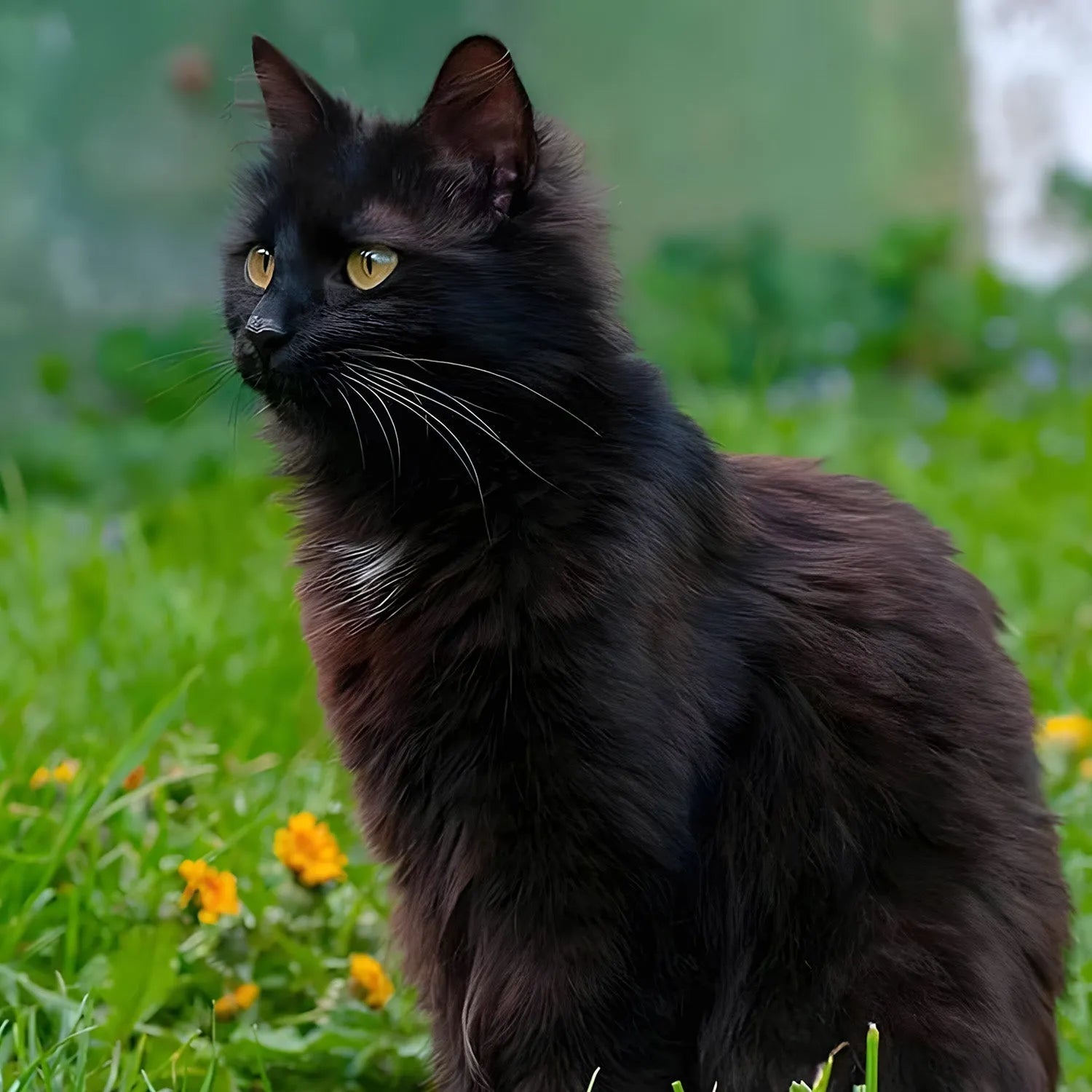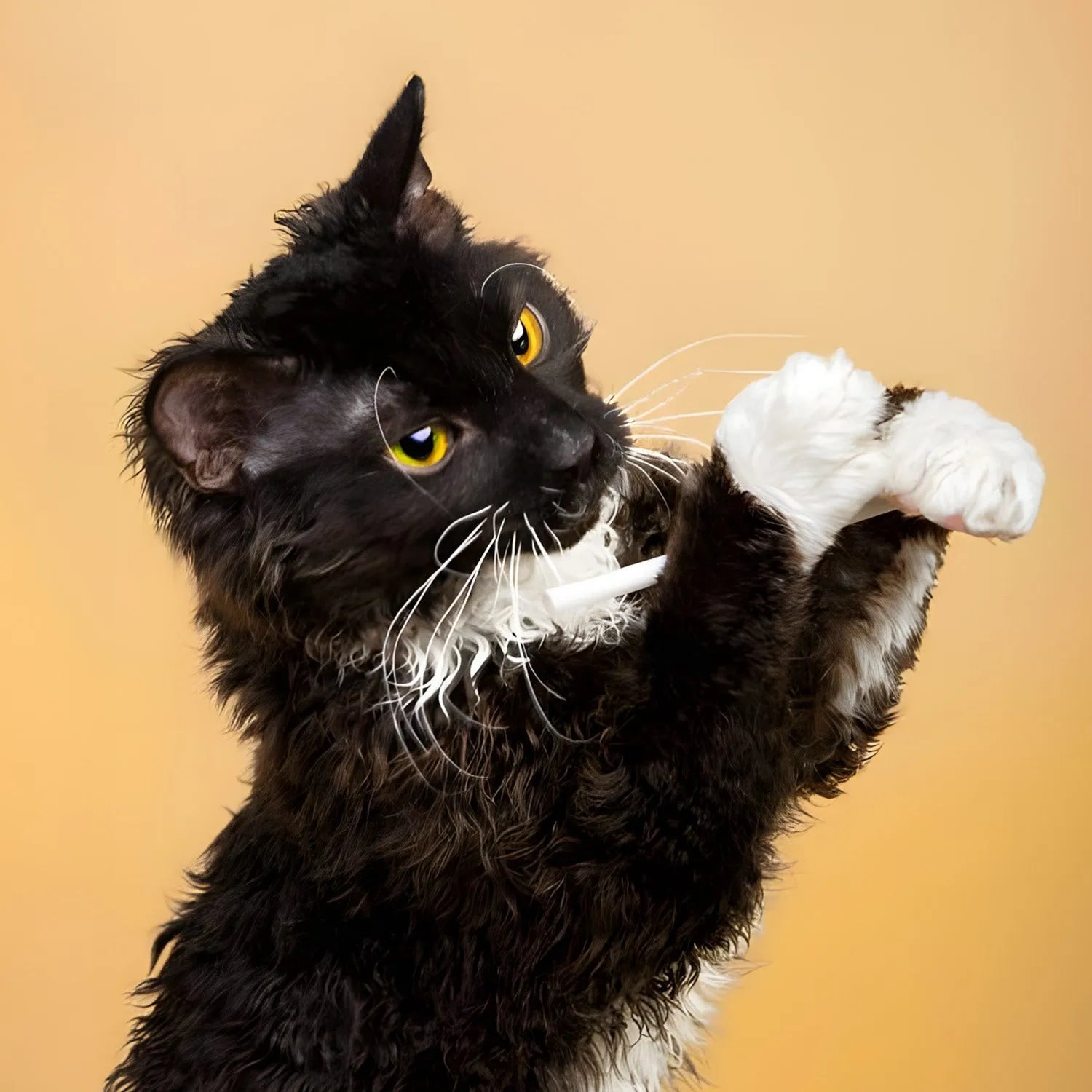Korean Bobtail: The Playful and Curious Short-Tailed Feline
Introduction
The Korean Bobtail is an energetic and curious breed, instantly recognizable by its short, stubby tail, which gives it a unique and playful look. This breed has a long history in Korea, where it is cherished for its beauty and lively personality. Much like its Japanese Bobtail cousin, the Korean Bobtail is an active and affectionate cat that loves to play and interact with its human family. If you're searching for a cat that’s full of life, friendly, and loves attention, the Korean Bobtail might be the perfect companion for your home. In this blog, we’ll explore the Korean Bobtail’s lifestyle, behavior, grooming needs, trainability, and how it interacts with humans and other pets.
Ratings (1-5)
-
Environmental Adaptability: 4
-
Food Consumption: 3
-
Need for Companionship: 5
-
Trainability: 4
-
Tolerance of Children: 5
-
Ease of Domestication: 5
History and Origins
The Korean Bobtail is an ancient breed, with a history that dates back centuries in Korea. This cat has long been associated with good luck, similar to other bobtail breeds in Asia, such as the Japanese Bobtail. Though the Korean Bobtail has not yet gained the widespread popularity of its Japanese cousin, it is a beloved breed in its native country. These cats were often kept in temples and palaces, where they were cherished not only for their beauty but also for their excellent hunting skills, helping to keep rodent populations under control. In more recent years, the breed has gained recognition in international cat associations, though it remains relatively rare outside of Korea.
Physical Characteristics and Colors
The Korean Bobtail is a medium-sized cat with a slender yet muscular build. Its most distinctive feature is its short, bobbed tail, which is usually about 1-3 inches long and may have a kink or curl, giving each Korean Bobtail a unique tail shape. No two tails are exactly alike, making this breed especially distinctive. The Korean Bobtail has large, almond-shaped eyes and a triangular head, giving it a curious and alert expression. The coat can be either short or long, and it comes in a variety of colors and patterns, including tabby, bicolor, and calico, with the calico pattern often being the most popular in Korea. Their coat is soft and silky, adding to their overall charm.
Lifestyle and Behavior
Korean Bobtails are known for their playful, energetic personalities. They are incredibly active cats that love to jump, climb, and explore their surroundings. Korean Bobtails are often described as "dog-like" in their devotion to their owners, frequently following their humans from room to room, eager to be part of the action. Despite their high energy levels, Korean Bobtails are also very affectionate and form strong bonds with their human families. They enjoy cuddling and will often seek out attention and affection. Korean Bobtails are social cats that thrive on interaction and are happiest in homes where they can receive plenty of love and attention. They enjoy interactive play and are particularly fond of games that involve chasing or pouncing on toys.
Trainability and Intelligence
Korean Bobtails are intelligent and can be trained to follow commands, perform tricks, and even walk on a leash. They respond well to positive reinforcement, such as treats and praise, and enjoy mental challenges that stimulate their minds. Because they are highly curious and adventurous, Korean Bobtails benefit from having plenty of interactive toys and activities to keep them entertained. Training sessions with Korean Bobtails should be short and fun, as they may become bored with repetitive tasks. Their intelligence and curiosity make them natural explorers, and they enjoy solving puzzles and engaging in games that challenge their problem-solving skills.
Social Behavior and Human Interaction
Korean Bobtail cats are incredibly social and form deep bonds with their human families. They are affectionate cats that enjoy being involved in every aspect of their owner’s life, often following their humans around the house and seeking out attention. Korean Bobtails are known for their playful and curious nature, and they enjoy interacting with their owners through play and affection. They are vocal cats, using a range of chirps, trills, and meows to communicate with their human families. Korean Bobtails thrive in homes where they can receive plenty of attention and love, making them ideal for individuals or families who are home often and enjoy spending time with their pets.
Compatibility with Children and Other Pets
Korean Bobtails are excellent companions for children due to their playful and tolerant nature. They enjoy interactive play and are generally patient with children’s antics, provided they are treated with respect. Additionally, Korean Bobtails tend to get along well with other pets, including dogs, as long as they are properly introduced. Their sociable and adaptable nature allows them to integrate well into multi-pet households, and they often enjoy the company of other animals as much as they do humans. Korean Bobtails are known for their ability to form strong bonds not only with their human families but also with other pets in the household.
Grooming and Care
The grooming needs of a Korean Bobtail depend on whether they have a short or long coat. Shorthaired Korean Bobtails require minimal grooming, with weekly brushing usually sufficient to remove loose hairs and keep their coat looking healthy. Longhaired Korean Bobtails, on the other hand, require more frequent brushing—at least two to three times a week—to prevent tangles and mats. Regular dental care, ear cleaning, and nail trimming are also important to maintain their overall health. Despite their grooming needs, Korean Bobtails enjoy the bonding time that grooming sessions provide, and it can be a great way to strengthen the bond between cat and owner. Bathing is generally not necessary unless the cat gets particularly dirty, as Korean Bobtails are good at keeping themselves clean.
Health and Lifespan
Korean Bobtail cats are generally healthy and have no major breed-specific health issues. However, as with all breeds, regular veterinary check-ups and a balanced diet are essential to maintain their health. With proper care, Korean Bobtail cats can live up to 12-15 years or more. Regular monitoring and preventive care are important to ensure a long and healthy life for your Korean Bobtail cat.
Environmental Adaptability
Korean Bobtails are adaptable cats that can thrive in various living environments, whether in a small apartment or a larger home. They are particularly well-suited to indoor living, where they can enjoy a stimulating environment with plenty of interactive play. Korean Bobtails are known for their resilience and can adjust well to different climates and household settings. Their adaptable nature makes them well-suited to a wide range of living conditions, but they thrive best in homes where they can receive plenty of attention and interaction from their owners.
Feeding Requirements
A balanced diet is crucial for maintaining the Korean Bobtail cat's health and energy levels. High-quality cat food that is rich in protein is recommended. Fresh water should always be available. Because Korean Bobtails are active and playful, they may require more calories than less active breeds to support their energy levels. Consult your veterinarian for specific dietary recommendations based on your cat's age, weight, and health needs. Monitoring their diet to prevent obesity is important, as Korean Bobtails can be prone to overeating if not properly managed.
Conclusion
The Korean Bobtail is a playful, intelligent breed that brings energy, affection, and joy to any household. Their strong bonds with their human companions, combined with their lively and curious nature, make them wonderful pets for families and individuals alike. If you're looking for a cat that will form a deep, loving connection with you and keep you entertained with its playful antics, the Korean Bobtail might be the perfect fit for you.
For more information about other cat breeds and pet care tips, stay tuned to our blog!
References:
-
Kim, H. (2021). "The Playful and Curious Korean Bobtail Cat." *Journal of Feline Studies*, 35(3), 201-215.
-
Richards, A. (2020). "Caring for Your Korean Bobtail Cat: A Comprehensive Guide." *Cat Lover’s Magazine*, July issue, pp. 30-40.
-
Harris, E. (2019). "Health and Wellness in Korean Bobtail Cats." *Veterinary Journal*, 79(2), 123-137.


